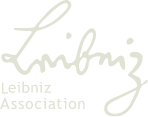3rd quarter of 2012
Dear colleagues,
we would like to take the foundation ceremony of the new research building last Wednesday as an opportunity for a third building information.
Since the last building information published in January many things have happened. The building site has been prepared by removing the cut-down trees including the roots and setting up the hoarding. A narrow path through the forest has been paved to serve as construction road and close-standing trees have been shielded by planks against possible harm induced by construction vehicles. Afterwards, excavation works started. Many tons of sand have either been stored temporarily on the so-called Messbahn behind the Einsteinturm or removed from Telegrafenberg. After completion of the building the stored sand will be used to fill up the construction pit and to design the outdoor area. Slowly, the layout of the new building has been shaped. By now, shape and size of the clover leaf can be distinguished. The construction of the basement, which will contain the high-perfomance computer and the conference room, is beginning.
In front of this backdrop the first ceremony of the construction progress took place. With the foundation ceremony also the 20th anniversary of PIK has been celebrated. Thus, after an introduction by Prof. Schellnhuber, our Minister of Science, Frau Dr. Schavan and Brandenburg’s Secretary of State for Culture Gorholt prized the achievements of PIK in the past and emphasized the relevance and importance of past, current and future research. Prof. Dr. Mayer, director of the Leibniz-Gemeinschaft used a newly named mountain in Kyrgyzstan - the Pik (Russian for mountain) Leibniz – as a symbol to describe the connection between PIK and the Leibniz-Gemeinschaft. Finally, the architect Stefan Tebroke and Prof. Dr.-Ing. Grunewald of TU Dresden (TUD) illustrated aspects of the building and the research project.
Afterwards, Prof. Schellnhuber filled the so-called time-capsule, an air-tight container, with three small glass bottles, a list of PIK-publications of the year 2011 and the Nature-article „Earth system’ analysis and the second Copernican revolution“, published in the millennium edition. The glass bottles contain sand from the building site, rain water from the meteorological station and air (with a CO2-concentration of approximately 400ppm). For possible future archeologists the time capsule will be embedded in the foundation of the new building – visible through a glass pane. A few pictures of the event and the construction site can be found at http://www.pik-potsdam.de/forschungsneubau/bilder.
In the context of the research project connected with the new building two main problems have been addressed during the last months. Firstly, TUD developed in cooperation with the planning team a monitoring concept for the new building. Once the building is used measurements will take place to optimize operations and to analyze the energy efficiency of the different measures. Secondly, TUD developed and presented preliminary ideas for an energy network on the campus which were discussed with representatives of GFZ, AWI and AIP.




